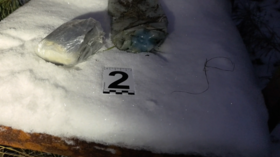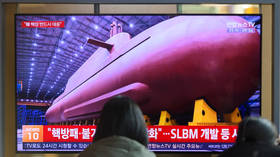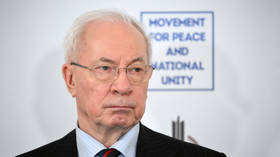Sanskrit shocker! Claims of 7,000yo inter-planetary planes shake up Indian Science Congress

Ancient knives so sharp they could slit a hair in two, 24-carat gold extracted from cow dung and even 7,000-year-old planes that could travel to other planets. Those are just a couple of the startling claims made at this week’s Indian Science Congress.
The surprising discoveries based on ancient Hindu texts, such as the Vedas and the Puranas, were presented at a session on “Ancient Indian Sciences through Sanskrit,” held for the first time in the history of the Indian Science Congress, which took place for the 102nd time in Mumbai on Sunday.
READ MORE: You ain’t seen nothin’ Yeti! Scientists search for Bigfoot DNA
One of the more controversial lectures, presented by Captain Anand Bodas, a retired principal of a pilot training facility, was dedicated to ancient airplane technology. “There is a reference to ancient aviation in the Rigveda,” Bodas said.
“The basic structure was of 60 by 60 feet, and in some cases, over 200 feet. They were jumbo planes,” Bodas said. “The ancient planes had 40 small engines. Today's aviation does not know even of a flexible exhaust system.”
The ancient aircraft could not only move in any direction, but travel between planets, Captain Bodas claimed.
READ MORE: Napping & Tableting: Indian plane ‘drops 5,000 feet’ as pilots asleep, distracted
The more than 3,000-year-old manuscript also described ancient pilots’ diet and clothes. According to Bodas, during specific periods pilots drank the milk of buffalo, cow and sheep, and they wore clothes made from vegetation grown underwater.
Ancient India sure had planes. Infact some of them are still flying...called Air India #vedic
— Parry, M A. MD (@doc_parry) January 5, 2015
“Now we have to import aeroplane alloys. The young generation should study the alloys mentioned in his book [Vimana Samhita by Maharishi Bharadwaj] and make them here,” Bodas said.
Bodas’s bodacious claims infuriated other participants in the congress, however.
NASA scientist Ram Prasad Gandhiraman started an online petition, demanding that the Indian Science Congress to cancel Bodas’s lecture, because it mixed mythology and science. "If we scientists remain passive, we are betraying not only the science, but also our children," said the petition, which was signed by over 1,000 people. Overall, in the last couple of weeks dozens of scientists slammed the idea to give a platform to “pseudoscience.”

READ MORE: Curiosity for Curiosity! UFO hunter spots ‘coffin’ on Mars (VIDEO)
However, the organizers of the congress, which unites over 30,000 Indian scientists, believed they were reviving the “vast knowledge of science” contained in the Indian holy texts.
At last Saturday’s ceremony at the beginning of the conference, Prime Minister Narendra Modi urged the nation’s scientists to “explore the mysteries of science.”
"We in India are the inheritors of a thriving tradition of Indian science and technology since ancient times' mathematics and medicine, metallurgy and mining, calculus and textiles, architecture and astronomy,” said Modi, who is a Hindu nationalist. “The contribution of Indian civilization to human knowledge and advancement has been rich and varied.”
RT: #VedicScience Revolutionary Inventions - Ancient Hair Dryers - You just can't beat this pic.twitter.com/v61ZgS51Uo
— Nostradamus sez (@nostradamuspeak) January 5, 2015
Union minister for environment, Prakash Javadekar, stressed the possibility to find application of ancient Indian concepts of technology in the modern world. "Scientists of ancient India, who lacked sophisticated tools or machines, developed accurate scientific concepts based on minute observations and logic," he said, The Hindustan Times reported.
Among other technologies, introduced at the congress there were polymers to build houses, made of cactus juice, egg shells and cow dung; a cow bacteria that turns anything eaten by an animal into pure gold, and the curious procedure of an autopsy, conducted by leaving a dead body floating in water for three days.
At the Indian Science Congress: "Cow carries a bacteria in its body. Whatever it consumes turns into 24-carat gold." pic.twitter.com/Jnsmhz2ubt
— Mihir Sharma (@mihirssharma) January 5, 2015












